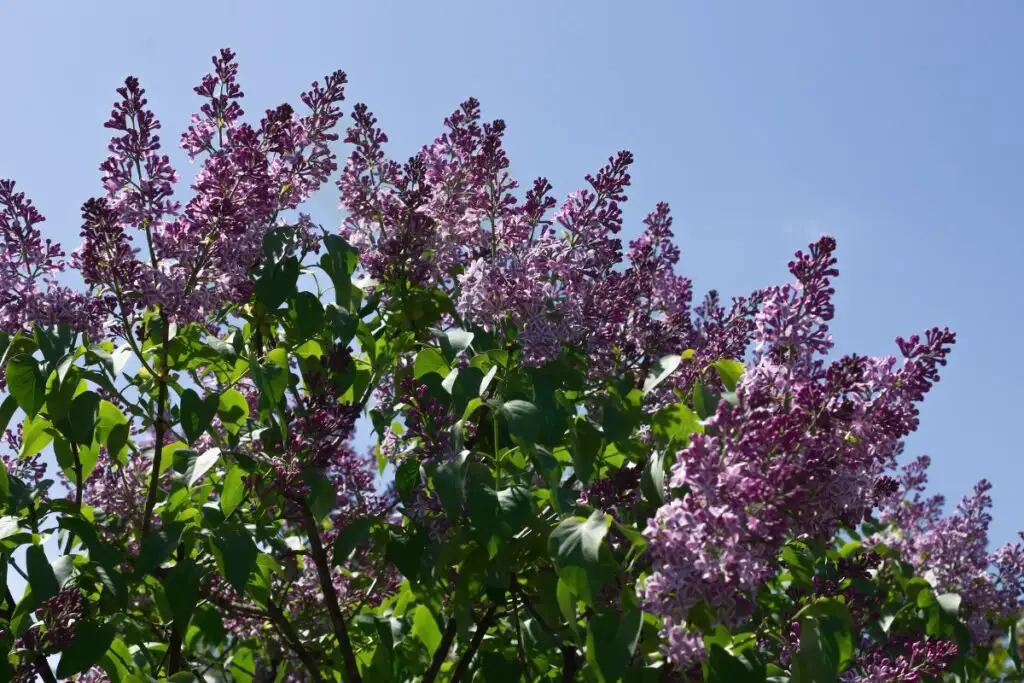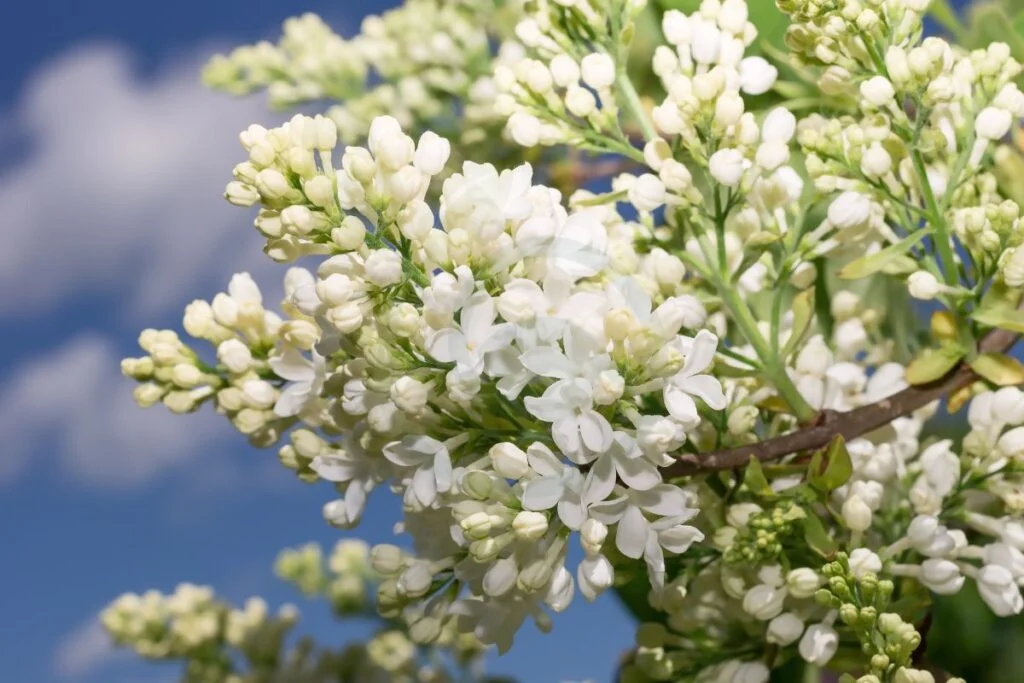Did you know that the variegated lilac bush can add a touch of elegance and charm to any garden space? With its striking multicolored foliage and vibrant blue flowers, this plant is a showstopper in landscaping. If you're looking to elevate your outdoor aesthetic with plants, the variegated lilac bush might just be the perfect addition you've been searching for.
The variegated lilac bush offers not only visual appeal but also easy maintenance and versatility in various garden settings. From planting tips to care instructions, we've got you covered with everything you need to know about the variegated lilac bush. Stay tuned for expert insights and practical advice on making the most of this captivating botanical gem.
Key Takeaways
- Discover the beauty of variegated lilac plants bushes and consider adding them to your garden for a unique touch.
- When planting variegated lilacs, choose a location with well-draining soil and sufficient sunlight.
- Ensure your variegated lilac bushes receive adequate sunlight for healthy growth and vibrant foliage.
- Follow a watering guide that includes regular watering but avoids waterlogging to maintain optimal soil moisture levels.
- Prune your variegated lilac bushes carefully to promote air circulation, remove dead wood, and shape the plant for better growth.
- Enhance the growth of your variegated lilac bushes by fertilizing them in the spring and mulching around the base to retain moisture.
Discover Variegated Lilac
Unique Characteristics
Identify the variegated lilac bush by its green foliage with gold and yellow marbling, making it visually distinct. Appreciate its resilience as one of the most robust variegated shrubs available in gardens. Enjoy the single, heavily scented blooms that open from purple buds to lavender-blue flowers.
Growth Habits
Observe the upright, rounded growth habit of the variegated lilac bush, adding a structured elegance to your garden landscape. Note its fast growth rate of 10-14 inches per year, ensuring quick development and expansion. Understand that it blooms in late May to early June for approximately 1.5 weeks, providing a short yet captivating display of colors.
Appearance Details
Notice the variegation being most prominent in spring, with gold and yellow coloring fading through summer, creating an ever-changing visual appeal. Admire the variegated lilac bush's purple buds opening into beautiful lavender-blue blooms, enhancing the overall charm of your outdoor space. Recognize the shrub's size of 8-10 feet in height and width, offering a substantial presence in your garden while remaining manageable for maintenance purposes.
Planting Variegated Lilac
Choosing Location
When planting a variegated lilac bush, opt for a sunny spot with at least 6 hours of sunlight daily. This exposure ensures the shrub blooms optimally. Consider its hardiness, making it suitable for hedges, shelterbelts, and large feature shrubs.
- Exposed planting location with adequate sunlight
- Ideal for hedging, shelterbelts, and large feature shrubs
Soil Preferences
The variegated lilac bush is versatile, tolerating both heavy clay and sandy soils. To prevent issues like powdery mildew, ensure the soil is well-draining. Avoid soggy soil since this shrub becomes drought-tolerant once established.
- Tolerates heavy clay and sandy soils
- Well-draining soil to prevent powdery mildew
Planting Process
Plant the variegated lilac bush with appropriate spacing: 3-4 feet for hedges and up to 6 feet for shelterbelts. Encourage limited suckering near the base to create a multi-stem shrub. Ensure the plant remains non-invasive and disease-resistant.
- Spacing of 3-4 feet for hedges, up to 6 feet for shelterbelts
- Create multi-stem shrub with controlled suckering
Sunlight Needs
Ideal Exposure
To ensure the variegated lilac bush thrives, plant it in a spot that receives ample sunlight. This exposure is crucial for the shrub's blooming and overall development. Aim for locations with at least 6 hours of sunlight daily.
Adjusting Sunlight Keep a close eye on how much sunlight the variegated lilac bush is getting to encourage blooming. It should ideally receive a minimum of 6 hours of sunlight each day. If needed, consider relocating the plant to optimize its exposure.
Watering Guide
Initial Requirements
- Prepare the planting site to meet the sunlight needs of the variegated lilac bush, ensuring it gets enough light.
- Choose a location that allows for proper spacing, considering the shrub's growth rate of 10-14 inches per year.
- Account for the fast growth rate when planning initial requirements to avoid overcrowding as it matures.
Ongoing Care
- Prune the variegated lilac bush immediately after flowering to maintain its health and shape.
- Monitor for powdery mildew, especially in shady spots, and take necessary actions promptly.
- Water the shrub during dry periods, particularly when it is establishing itself to promote healthy growth.
Pruning Tips
Best Time
Plan to prune the variegated lilac bush immediately after the blooms fade. Choose planting time based on growth habits and sunlight needs. Consider fertilizing timing for optimal growth support.
Pruning Techniques
Employ proper pruning techniques by cutting back post-flowering. Avoid early or late pruning to protect future flower buds. Shape the shrub for desired aesthetics while preserving its health.
Enhancing Growth
Fertilizing Tips
Applying fertilizer to the variegated lilac bush is crucial for its growth. Choose a fertilizer rich in nutrients that encourage blooming and overall health. Following recommended guidelines prevents issues like overfeeding or undernourishing.
When fertilizing, ensure it's done at the right time to support the plant's development. Opt for a fertilizer specifically designed to promote flowering and enhance the shrub's overall well-being. Overfeeding can harm the plant, so stick to the proper guidelines.
- Choose nutrient-rich fertilizer
- Follow recommended guidelines
- Prevent overfeeding or undernourishing
Mulching Benefits
Mulching around the variegated lilac bush base offers several advantages. It helps retain moisture, suppresses weeds, and enhances soil health. Organic mulch decomposes, providing essential nutrients to the soil.
Mulching benefits extend beyond moisture retention; it also aids in maintaining optimal soil temperature and moisture levels. By using organic mulch, you not only suppress weeds but also enrich the soil with vital nutrients.
- Retains moisture and suppresses weeds
- Provides nutrients as it decomposes
- Maintains soil temperature and moisture levels
Boosting Blooming

Encouraging Flowers
Encourage blooming by providing the variegated lilac bush with proper care and maintenance. Ensure the shrub gets enough sunlight and nutrients for flower production. Implement pruning and fertilizing techniques to promote abundant, healthy blooms.
Adjust care practices based on the season to support the variegated lilac bush's growth. Monitor the shrub for any seasonal changes in appearance or health. Prepare the shrub for winter by ensuring it is adequately mulched and protected from harsh conditions.
Seasonal Care
- Spring: Prune after blooming, removing dead wood to stimulate new growth.
- Summer: Water deeply during dry spells to prevent stress and encourage flowering.
- Fall: Apply a balanced fertilizer to prepare the plant for winter dormancy.
- Winter: Mulch around the base of the shrub to protect roots from freezing temperatures.
Maintain soil moisture levels by watering deeply but infrequently, allowing the soil to dry out slightly between waterings. Avoid over-fertilizing, as this can lead to excessive foliage growth at the expense of flowers.
Avoid planting variegated lilac bushes near competing trees or shrubs that may shade them, limiting their access to sunlight. Regularly inspect the plant for pests such as aphids or powdery mildew, addressing any issues promptly to prevent damage to blooms.
Landscaping Benefits
Aesthetic Appeal
Enhance your garden's visual charm with the variegated lilac bush. Its unique foliage and blooms add a touch of elegance to any landscape. When deciding where to plant this shrub, take into account its size and growth patterns. Integrate the variegated lilac bush strategically into hedges, shelterbelts, or as a standalone focal point for maximum impact.
- Variegated lilac bush enhances garden aesthetics
- Consider shrub's size and growth habits for placement
- Create visual interest by incorporating it into hedges or as a standalone feature
Wildlife Attraction
Attract delightful hummingbirds and essential pollinators to your outdoor space by introducing the variegated lilac bush. Revel in the fact that this shrub is deer-resistant, making it an ideal addition for wildlife-friendly landscaping. By planting the variegated lilac bush in your garden, you can establish a welcoming habitat for beneficial insects and birds.
- Variegated lilac bush attracts hummingbirds and pollinators
- Deer-resistant nature makes it wildlife-friendly
- Planting creates habitat for beneficial insects and birds
Overcoming Challenges
Common Issues
Variegated lilac bushes may encounter common issues like powdery mildew, so vigilance is crucial. Keep an eye out for signs of stress or disease, especially in shady planting spots. Swiftly address any problems to maintain the plant's health and vigor.
To ensure the longevity of your variegated lilac bush, it's essential to be proactive in monitoring for issues. Powdery mildew can quickly take hold, affecting the plant's overall well-being. Regularly inspect the shrub for any abnormalities and act promptly if you notice any concerns.

Prevention Strategies
Protect your variegated lilac bush by implementing prevention strategies against common problems such as powdery mildew. Choose planting locations that receive adequate sunlight and airflow to minimize the risk of diseases taking hold. Proper spacing and pruning techniques are vital for promoting the shrub's resilience and vitality.
When it comes to safeguarding your variegated lilac bush, strategic planning is key. By selecting optimal planting sites with ample sunlight and good air circulation, you can reduce the likelihood of disease. Maintaining appropriate spacing between plants and practicing regular pruning will contribute to the overall health of your shrub.
Closing Thoughts
You've now mastered the art of caring for your variegated lilac bush. From planting to pruning, and boosting blooming, you're equipped with the knowledge to ensure your plant thrives. Remember the importance of sunlight, watering, and overcoming challenges along the way. By following these tips, you'll witness your variegated lilac bush transform into a stunning focal point in your landscape.
Now it's time to put your newfound expertise into action. Head out to your garden, armed with your pruning shears and watering can, and watch as your variegated lilac bush flourishes under your care. Share your success with others and inspire them to embark on their gardening journey too. Your beautifully blooming variegated lilac bush will be a testament to your green thumb skills.
Frequently Asked Questions
Can variegated lilac bushes thrive in partial sunlight?
Variegated lilac bushes thrive best in full sunlight to partial shade, ideally receiving at least 6 hours of direct sunlight daily. While they can tolerate some shade, optimal growth and blooming occur in sunnier locations.
How often should I water my variegated lilac bush?
Water your variegated lilac bush deeply once a week during dry spells, ensuring the soil is well-drained. Adjust watering frequency based on weather conditions; avoid overwatering to prevent root rot.
When is the best time to prune a variegated lilac bush?
Prune your variegated lilac bush immediately after flowering in late spring or early summer. Remove dead or damaged branches, shape the bush, and encourage new growth. Avoid heavy pruning as it may affect next year's blooms.
What are some tips for enhancing the growth of a variegated lilac bush?
To enhance growth, fertilize your variegated lilac bush with a balanced fertilizer in early spring before new growth appears. Mulch around the base to retain moisture and suppress weeds. Regularly prune to maintain shape and remove old wood.
How can I boost blooming on my variegated lilac bush?
Boost blooming by applying a phosphorus-rich fertilizer in early spring to promote flower production. Deadhead spent blooms promptly to encourage continuous flowering throughout the season. Proper pruning and adequate sunlight also contribute to prolific blooming.
Image Source: Paid image from CANVA





